
And she did get out of Japan. During 1989 and 1990, she spent on a mountaintop in Kenya, serving the Japanese Peace Corp. She was teaching in a school where she realized that the liberation she is striving for could be attained through art.
Pursuing art, Mikiko came to America. However, she thinks it was not during her Columbia College days where she studied art, instead now, in her solitude of a Texas country life, she practices the same. Graduating with a degree in art, she started her career as a graphic designer in Chicago. She met her husband and moved to Texas. From acrylic, she has moved to oil as a medium of painting. Her technique is more realistic, and she likes to do portraits of people around her. In her words, ‘my paintings are more realistic and depict what I see. I usually paint from looking at photos unless it is still life. Oil paint is my medium, and I use ultramarine blue and transparent red oxide paint mix to make darker color instead of black.’ She loves her family and would like to document their age change and passing phases of life. In one such painting, given here, Mikiko documents her son playing the cello. The cello is an important part of Adrian’s life.
Back in Kenya, in 1989, life was a challenge. Mikiko told me that her experiences there were very different from Japan. There was no electricity and no running water. She befriended people from the American peace corp. Her attraction towards the US continued. She returned to Japan with an appreciation for art. Though a student of science, she started frequenting art exhibits. ‘The greatness of art impressed upon’ her. That phase of her life in Tokyo was all gloomy. She hooked onto the life examples of Van Gogh, whose works she admires. ‘I was living in Tokyo, and I went to an art exhibition of Egon Schiele there in 1992. The exhibition left upon me a huge impression. Seeing the original works of Egon Schiele was amazing. I always loved Vincent Van Gogh and other artists from that period. I wanted to become a painter like Van Gogh, a very passionate painter. Egon Schiele’s paintings also moved me.’

Family Quartet
Like Vincent Van Gogh, Mikiko Kudo started painting at the age of 27. Van Gogh used a lot of light in his paintings. As if his paintings are the burning suns themselves, the light of which he was searching in his despair. Mikiko’s paintings are instead in cool dark tones. They absorb light more than they emit. Somewhere I presume she is missing Japan. She said that she likes her country living in Texas, where she rears chicken and grows vegetables, perhaps it gives her back the childhood she so wanted to escape. Perhaps it brings back the emotions that are reflected on the canvas. “These days, I like to paint Japanese landscapes,’ she confessed. Like her blended brushstrokes, which hardly one can see in her works, Japan resides in her subconscious mind. ‘After living in America for many years, I started appreciating more about Japanese culture, Japanese art, nature, and the beauty of Japan. I have been painting a lot of Japanese landscapes, flowers, and plants besides portraits. When I visit Japan, I try to go to art exhibitions there and try to see more Japanese paintings. One contemporary artist I admire a lot these days is Jennifer Balkan. She does unique portraits. As I have been painting for many years, my paintings are evolving, and I try many different ways of painting and different styles. I try to learn more techniques and new styles with my paintings. I just keep painting and try to get better and create something worthwhile.’
She and her family has grown a habit of visiting Japan every summer. She helps her octogenarian mother there on her farm. Mikiko Kudo’ reevaluates the roots, inadvertently.
For the month of April, The Antonym has chosen following six works by Mikiko for the covers of respective sections. Her website is http://www.mikikokudo.com/
- “Sophia Dancing in Kimono”, acrylic on canvas, 33″x24″ 2016
- “Cactus”, oil on canvas, 20″ x 16″, 2020
- “Adrian With His Cello”, oil on canvas, 18″ x 14″, 2017
- “Knight” oil on canvas, 14″11″, 2019
- “Pagoda In Mt. Hagurosan”, oil on canvas, 20″ x 16″, 2020
- “Chappy with Her Toys” oil on canvas, 14″x11″,2019

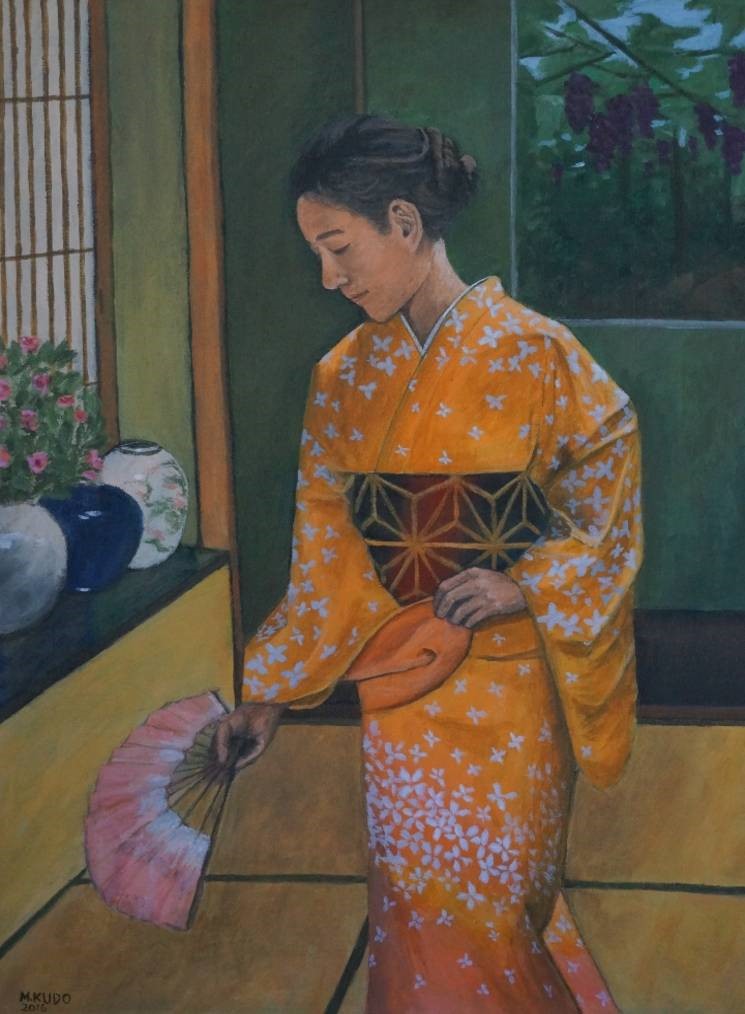

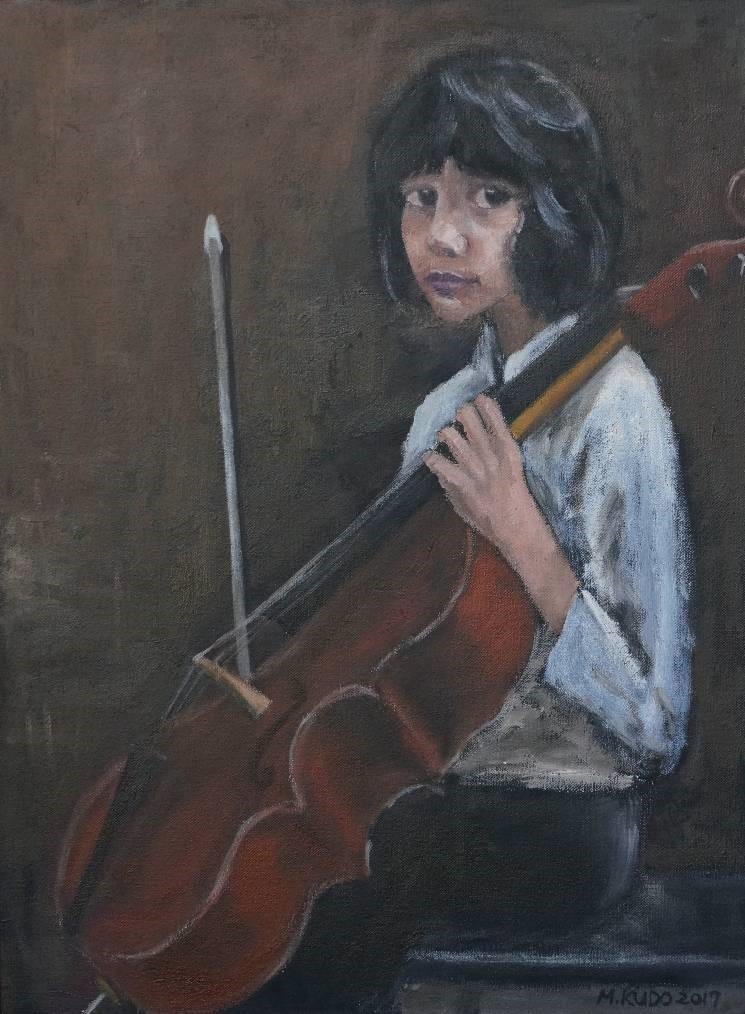
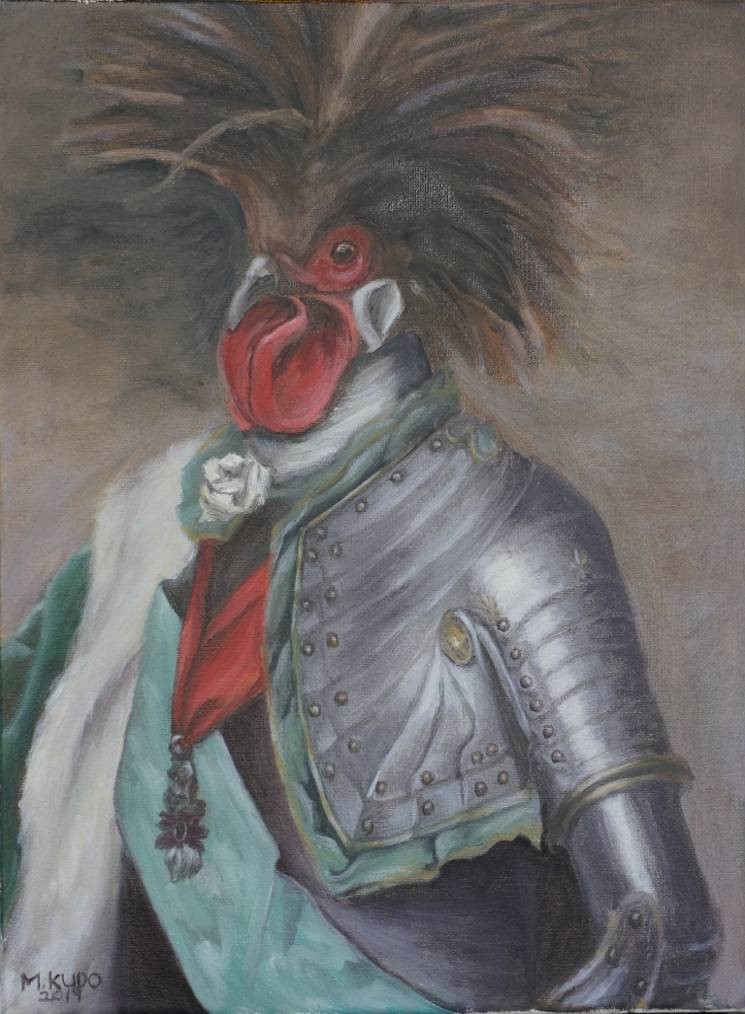
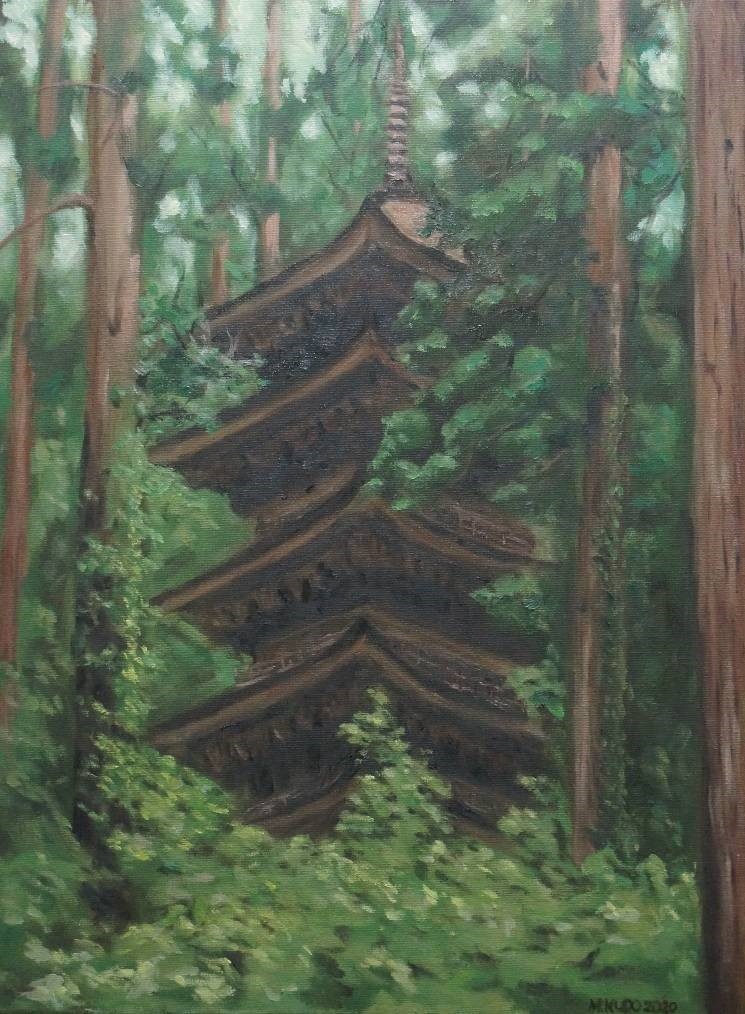
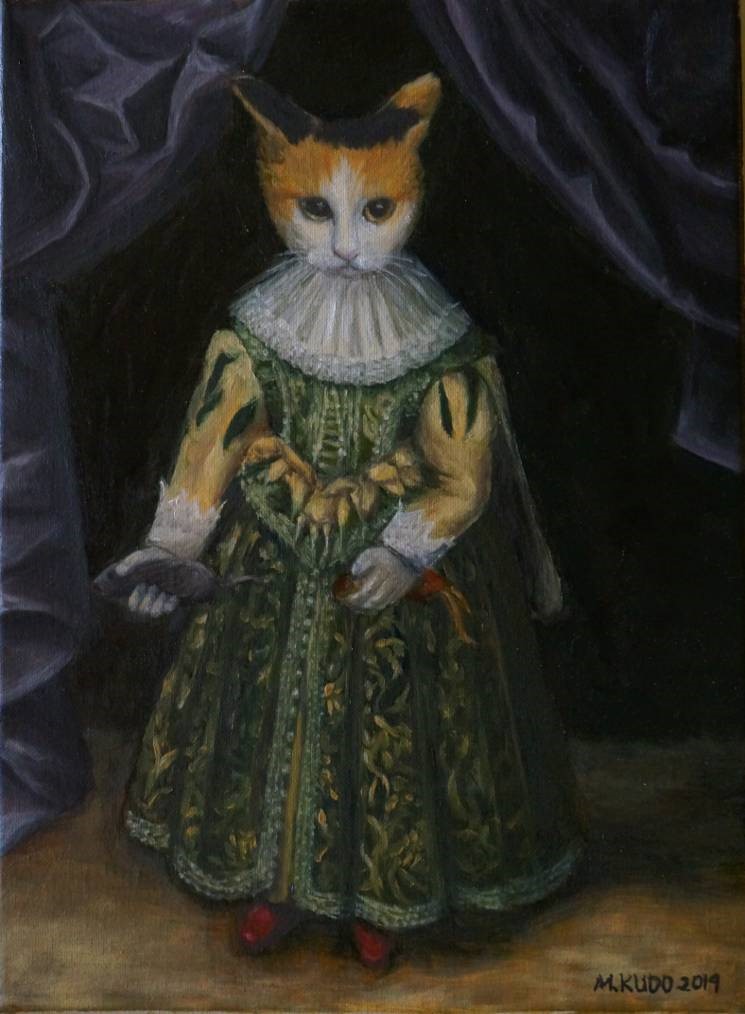
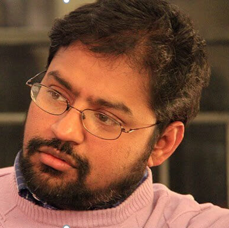
























0 Comments